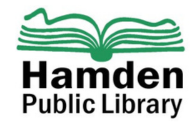
A History of Ukraine
Ukraine is the largest country in Europe by land area of 603,628km2. It has a population of over 40 million people, an official language of Ukrainian, and is a major world exporter of wheat and grains. Ukraine has extensive fertile farmland, the Dnieper River, and a coastline on the Black Sea. Ukraine is considered a developing country and is the poorest nation in Europe.
Early History: Kyivian Rus was founded in the 9th century, Kyiv became the capital due to its strategic location on the Dnieper River. Over the next few centuries, Kyiv became the cultural and political centre of Europe. *Kyiv is the English translation for the Ukrainian capital while Kiev is derived from Russian and is dwindling in usage*
From the 13th to 17th Century, the area of modern Ukraine dealt with foreign domination, occupations, and invasions from Mongolia, Poland, Lithuania, Russia, and the Ottoman Empire.
The Cossack uprising in the mid-to late 1600’s against Polish rule led to the idea of Ukraine as an independent state. What is considered to be the first ever constitution was drafted and very early structures of democracy were created.
Russian Rule: In order for the Cossacks to break from Poland they made the Pereyaslav Agreement with Russia to remain an independent nation under Russian protection. This led to the Russo-Polish War which ended with significant Russian territorial gains and began Russian power in Eastern Europe.
In the 1700’s Russia annexed and absorbed Ukraine region by region. Galicia, a region of western Ukraine acquired by Poland and run by the Habsburg Monarchy, became the centre of Ukrainian culture and politics by the 1800’s. The Ukrainian language was banned in Russian territory.
Modern History: Ukraine declared independence in 1918 but struggled with civil war and Soviet invasion. Stalin killed millions of Ukrainians in a man-made famine and annexed Western Ukraine after Poland’s fall to the Nazis. More than five million Ukrainians died fighting Nazi Germany and most of Ukraine’s 1.5 million Jews were killed by the Nazis. Armed resistance to Soviet rule ended in the 1950’s. In 1986 the Chernobyl nuclear power station exploded, killing 31 people and contributing to thousands of deaths in the long-term.
Independence: Ukraine declared its independence in 1991, shortly thereafter, the Soviet Union officially dissolved. Ukraine has struggled to move their economy from socialism to capitalism. They have also dealt with political corruption and a wavering between European and Russian loyalties often going back and forth on NATO membership. In 2014, Russia annexed Crimea after Ukrainians ousted President Yanukovych for refusing to sign a trade agreement with the EU. Currently, Russian President Vladimir Putin has invaded Ukraine unprovoked with the goal of expanding the Russian sphere of influence.
Watch Revealing Ukraine on Kanopy
